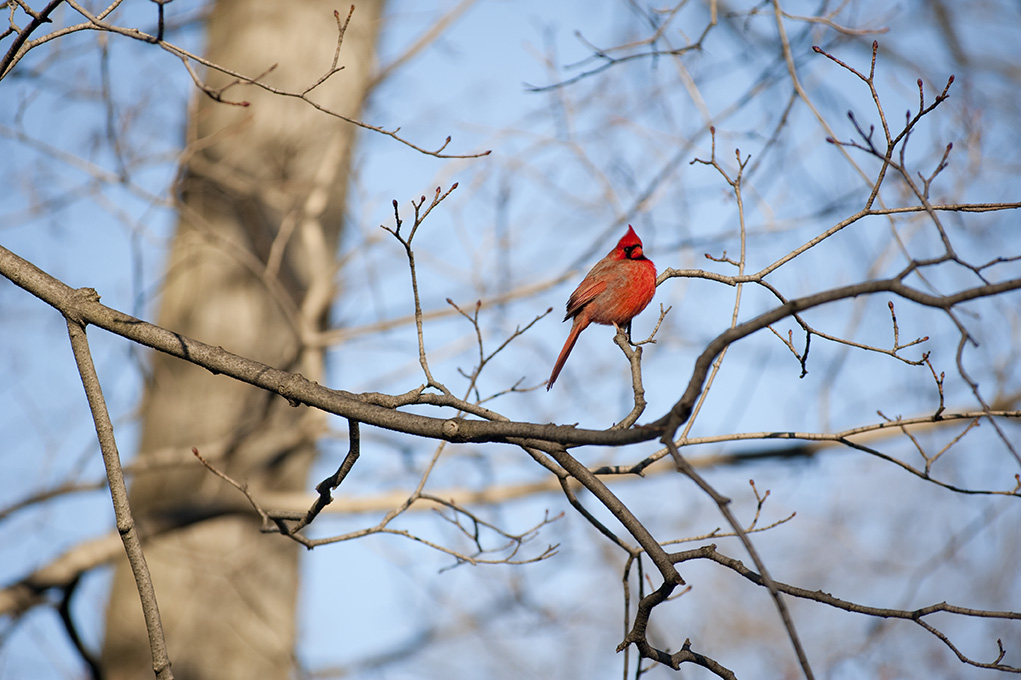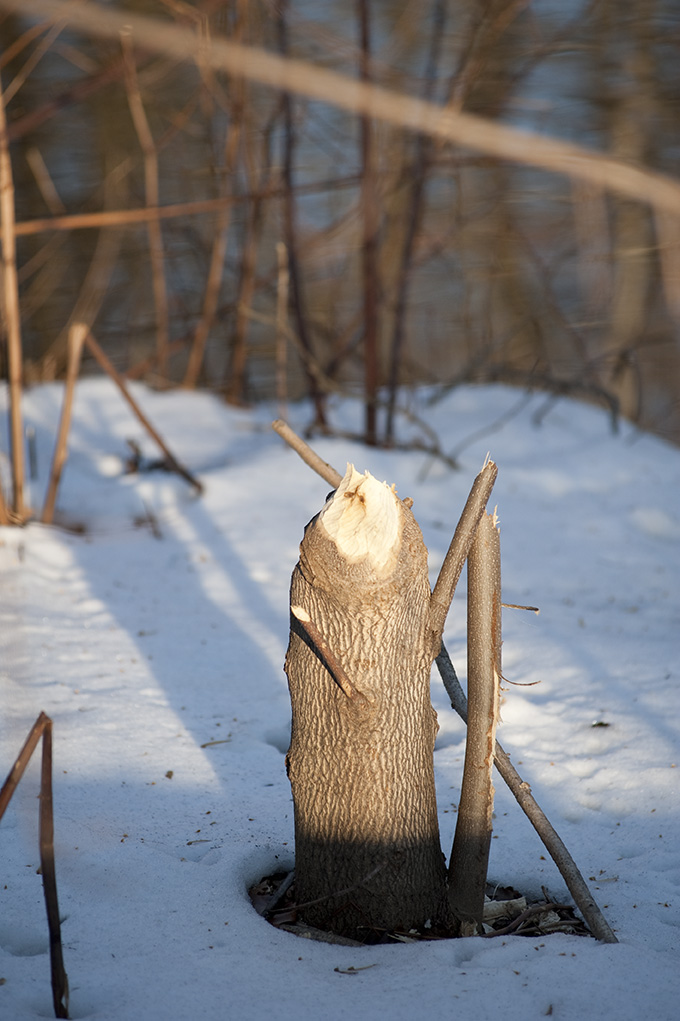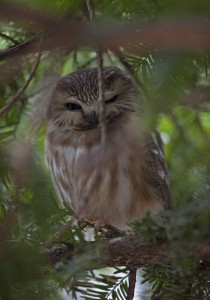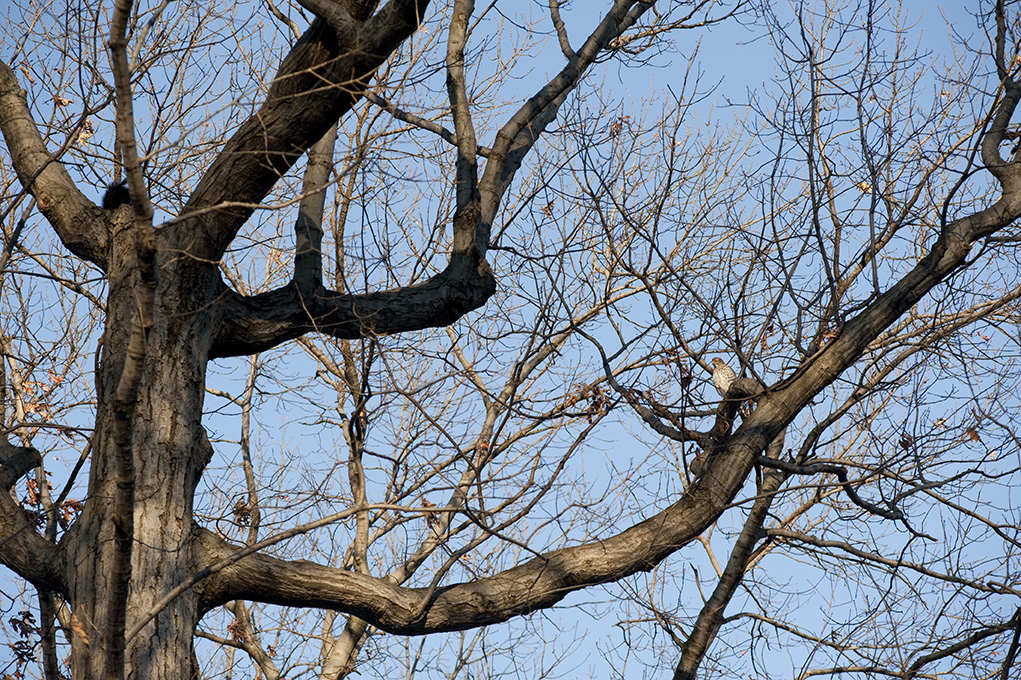Inside The New York Botanical Garden
new york city
Posted in Wildlife on January 13 2011, by Plant Talk
| Mark Weckel is Director of Research and Land Management, Mianus River Gorge Preserve |
From Westchester down to Manhattan, reports of coyote sightings cropped up throughout 2010.
The truth is, coyotes don’t live everywhere (and so far not at The New York Botanical Garden), but they are becoming increasingly more adapted to urban living Researchers from Mianus River Gorge Preserve and WildMetro are using remote cameras (see footage of a coyote at Nature Study Woods in Westchester County below) to monitor urban coyotes to try to figure out one important question: Just how urban can an eastern coyote get?
Coyotes are native to the western U.S., yet have expanded their range throughout the east As of now the only large landmass without a coyote population is Long Island. If coyotes are to colonize Long Island, those living in Westchester and New Jersey will have to go through New York City!
This is giving wildlife biologists the rare opportunity to learn more about how animals adapt to urbanization in real time, which parks and natural areas will support coyotes, how they use man-made and natural corridors, and hopefully, what role these new predators will have to the ecology of the greater NYC metropolitan area.
Video: Nature Study Woods, Westchester County, NY 2010
Posted in Photography on January 13 2011, by Plant Talk
Can’t you just hear the chip of disapproval from this male cardinal?

Male Northern Cardinal in the Forest (photo by Ivo M. Vermeulen)
Posted in Photography on January 11 2011, by Plant Talk
 It’s obvious that we love photography here at the Garden. We love our Morning Eye Candy and photo essays. But best of all, we love the photos that you, the visitor, share with us!
It’s obvious that we love photography here at the Garden. We love our Morning Eye Candy and photo essays. But best of all, we love the photos that you, the visitor, share with us!
So to show you how much we love you and your photos, we’re offering half-off admission for a limited time, holding Saturday afternoon photography tutorials, and we’re throwing a photography contest in honor of our latest exhibition, Caribbean Garden which opens on Saturday. The contest will have two categories: Macro and Sense of Place, and the winner in each category (two total) will get a seat in a spring semester photography class! (See all the details here).
There’s just a few things to remember:
- Tripods are not allowed inside the Enid A. Haupt Conservatory.
- To be eligible a photograph must have been taken during the course of the Caribbean Garden.
- Photographs entered into the contest should have Caribbean Garden as their main theme.
- We’ll be using Flickr for the contest, so you have to be a member of our Group Pool (learn more about our Group Pool).
- To vote, you do not need to be a member of the Flickr community, but you will need a free Yahoo or Google account.
- In case of a tie, we’ll convene a panel of NYBG experts to pick a final winner!
So get your shutter finger warmed up, dust off your lenses, charge up your batteries, and get ready to snap some pictures! And please, if anything is unclear, let us know in the comments below. We hope you’re as excited as we are!
Posted in Photography on January 11 2011, by Plant Talk

The 1852 Stone Cottage in snow (photo by Ivo M. Vermeulen)
Posted in Photography on January 9 2011, by Plant Talk
It’s the last day of the Holiday Train Show. When you’re in the Palm Gallery checking out this year’s new building, the famous TWA Terminal at JFK Airport, be sure to look up. It’s pretty amazing up there, too.

The dome of the Palm House in the Enid A. Haupt Conservatory (photo by Ivo M. Vermeulen)
Posted in Around the Garden, Photography on January 7 2011, by Plant Talk
| Ann Rafalko is Director of Online Content. |
I just got back from a walk around the grounds, and just had to show you how beautiful it is here! The sidewalks are mostly clear, and the Train Show is inside. So grab your camera and come visit! It’s gorgeous!
Trees
More below, including a teeny tiny snowman!
Posted in Wildlife on January 6 2011, by Plant Talk
| Ann Rafalko is Director of Online Content. |
 The story of José and Justin Beaver is a tale of two tails.
The story of José and Justin Beaver is a tale of two tails.
In case you’re unfamiliar with the furry duo, perhaps we should offer an introduction. You see, José Beaver is no ordinary beaver. José is, in fact, the first confirmed beaver living within New York City limits in the more than 200 years since his furry forebears were hunted and trapped into local extinction for their luxurious pelts. Beavers were once so important to New York City they are featured on the city’s seal, and frequently act as adornment on buildings around town (and in place names, too).
So, you can see why such a fuss was made when José’s very existence in New York City was confirmed. José is a living link to history. And it only got better when, in October, the existence of José’s pal was confirmed. In a nod to popular culture, he was dubbed Justin Beaver (though, it remains possible that Justin may one day be deemed a Justine–beavers are notoriously hard to sex).
Head below the jump for more on why José and Justin are more than just cute, furry face.
Posted in Photography on January 5 2011, by Plant Talk
For preening, don’t you think?

Red-Tailed Hawk on the roof of the Enid A. Haupt Conservatory (photo by Ann Rafalko)
Posted in Around the Garden on January 3 2011, by Plant Talk
 In what has become an annual holiday tradition, a group of intrepid bird watchers gathered at The New York Botanical Garden early on the day after Christmas (and just ahead of the Boxing Day Blizzard) to survey the Garden’s avian residents. Led by Steve Nanz, the group fanned out over the Garden’s 250-acres to count our feathered friends. In the end, the annual census was called early on account of the snow.
In what has become an annual holiday tradition, a group of intrepid bird watchers gathered at The New York Botanical Garden early on the day after Christmas (and just ahead of the Boxing Day Blizzard) to survey the Garden’s avian residents. Led by Steve Nanz, the group fanned out over the Garden’s 250-acres to count our feathered friends. In the end, the annual census was called early on account of the snow.
Despite that, the group still managed to spot 36 species, and a few rare birds, the highlight being a beautiful little Saw-whet Owl (pictured at right).
See the complete survey results below.
Posted in Photography on January 3 2011, by Plant Talk
Despite his soft white belly, one of our resident hawks is barely visible against winter’s blue sky. Do you see him?

Lone Hawk (photo by Ivo M. Vermeulen)


 It’s obvious that we love photography here at the Garden. We love our
It’s obvious that we love photography here at the Garden. We love our 




